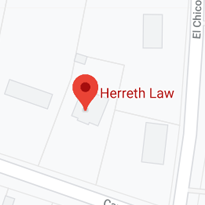 Animal attack injuries are one of the most common homeowners’ insurance claims in Texas. Furthermore, since medical and psychological knowledge has increased in this area, the average claim amount has skyrocketed 75 percent since 2003.
Animal attack injuries are one of the most common homeowners’ insurance claims in Texas. Furthermore, since medical and psychological knowledge has increased in this area, the average claim amount has skyrocketed 75 percent since 2003.
When a large breed dog, like a pitbull, attacks a small child, the knockdown alone usually causes serious injury. Additionally, when they bite, their teeth often cause both deep puncture wounds and severe slashing lacerations.
These attacks also cause significant psychological injuries. Many victims deal with Post Traumatic Stress Disorder-like symptoms, such as flashbacks and heightened awareness, for many months after the attack.
A Fort Worth personal injury attorney can obtain substantial compensation in these cases. But Texas laws are complex, and insurance companies aggressively defend these claims.
Your Claim for Damages
In terms of owner liability, Texas is a one-bite state. This common law rule states that dog owners are not liable for damages unless they know the animal is potentially dangerous. Evidence of knowledge includes:
- Prior attacks,
- Vicious growling,
- Aggressive barking,
- Sudden lunging, and
- Baring of teeth.
Note that this evidence might have surfaced a few months before the attack or a few moments before the attack. Adequate notice is not a requirement. Victim/plaintiffs need only establish knowledge.
Texas law does have an exception to the one-bite rule. If the owner fails to prevent an attack in progress, even if there was no knowledge, the owner may still be liable for damages.
The same timeline analysis applies here. Attacks do not begin when dogs sink their teeth into victims. They begin when the animal lunges toward the victim. At that point, most animals should respond to a verbal command or a pull on a leash.
Speaking of leashes, negligence per se, or a violation of statute, also applies in this context. If the owner violated a safety law, such as a leash law, fence law, or other animal restraint law, and that violation substantially caused the victim’s injury, liability may attach.
Ordinary negligence, or a lack of reasonable care, may apply as well. For example, if a landlord knows that an animal is dangerous and an attack occurs in a common area, like a sidewalk, the landlord may be liable for damages.
Some Common Defenses
Assumption of the risk, which is one of the most common dog bite defenses, is unavailable in Texas. However, insurance company lawyers often try to use the contributory negligence defense to reduce compensation.
Essentially, comparative negligence shifts blame for the attack from the owner onto the victim. Many times, insurance company lawyers try to argue that the victim provoked the dog. But in this context, provocation means more than teasing or even hitting a dog. The victim must inflict so much pain on the animal that the dog had to respond violently. Typically, children under 5 cannot be contributorily negligent in a dog bite attack as a matter of law.
Texas is a modified comparative fault state with a 50 percent threshold. So, if the defendant was at least 50 percent responsible for the attack, the victim is entitled to a proportional share of damages.
Dog bite victims may be entitled to significant compensation. For a free consultation with an experienced personal injury attorney in Fort Worth, contact Herreth Law. Attorneys can connect victims with doctors, even if they have no money or insurance.

